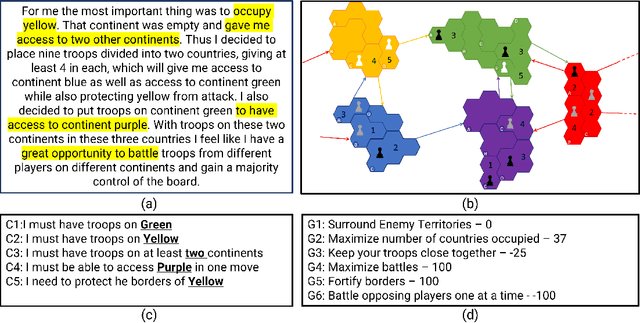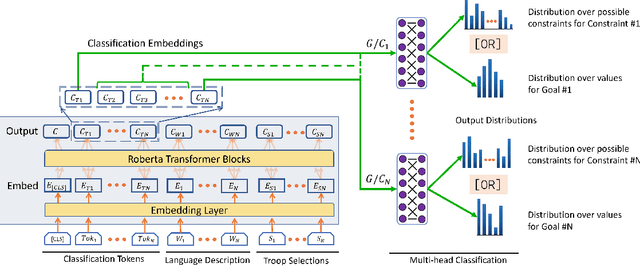Lakshita Dodeja
Towards the design of user-centric strategy recommendation systems for collaborative Human-AI tasks
Jan 17, 2023Abstract:Artificial Intelligence is being employed by humans to collaboratively solve complicated tasks for search and rescue, manufacturing, etc. Efficient teamwork can be achieved by understanding user preferences and recommending different strategies for solving the particular task to humans. Prior work has focused on personalization of recommendation systems for relatively well-understood tasks in the context of e-commerce or social networks. In this paper, we seek to understand the important factors to consider while designing user-centric strategy recommendation systems for decision-making. We conducted a human-subjects experiment (n=60) for measuring the preferences of users with different personality types towards different strategy recommendation systems. We conducted our experiment across four types of strategy recommendation modalities that have been established in prior work: (1) Single strategy recommendation, (2) Multiple similar recommendations, (3) Multiple diverse recommendations, (4) All possible strategies recommendations. While these strategy recommendation schemes have been explored independently in prior work, our study is novel in that we employ all of them simultaneously and in the context of strategy recommendations, to provide us an in-depth overview of the perception of different strategy recommendation systems. We found that certain personality traits, such as conscientiousness, notably impact the preference towards a particular type of system (p < 0.01). Finally, we report an interesting relationship between usability, alignment and perceived intelligence wherein greater perceived alignment of recommendations with one's own preferences leads to higher perceived intelligence (p < 0.01) and higher usability (p < 0.01).
Commander's Intent: A Dataset and Modeling Approach for Human-AI Task Specification in Strategic Play
Aug 17, 2022



Abstract:Effective Human-AI teaming requires the ability to communicate the goals of the team and constraints under which you need the agent to operate. Providing the ability to specify the shared intent or operation criteria of the team can enable an AI agent to perform its primary function while still being able to cater to the specific desires of the current team. While significant work has been conducted to instruct an agent to perform a task, via language or demonstrations, prior work lacks a focus on building agents which can operate within the parameters specified by a team. Worse yet, there is a dearth of research pertaining to enabling humans to provide their specifications through unstructured, naturalist language. In this paper, we propose the use of goals and constraints as a scaffold to modulate and evaluate autonomous agents. We contribute to this field by presenting a novel dataset, and an associated data collection protocol, which maps language descriptions to goals and constraints corresponding to specific strategies developed by human participants for the board game Risk. Leveraging state-of-the-art language models and augmentation procedures, we develop a machine learning framework which can be used to identify goals and constraints from unstructured strategy descriptions. To empirically validate our approach we conduct a human-subjects study to establish a human-baseline for our dataset. Our results show that our machine learning architecture is better able to interpret unstructured language descriptions into strategy specifications than human raters tasked with performing the same machine translation task (F(1,272.53) = 17.025, p < 0.001).
 Add to Chrome
Add to Chrome Add to Firefox
Add to Firefox Add to Edge
Add to Edge